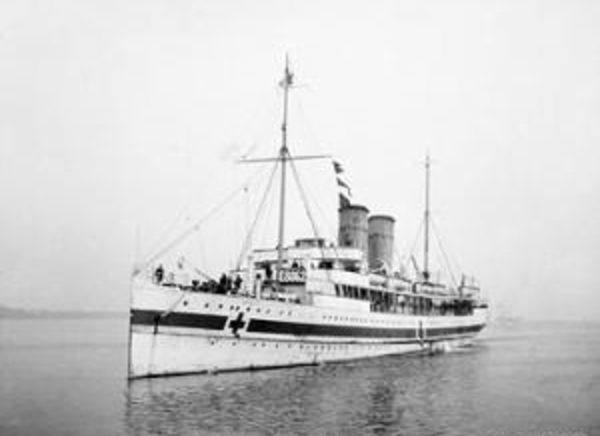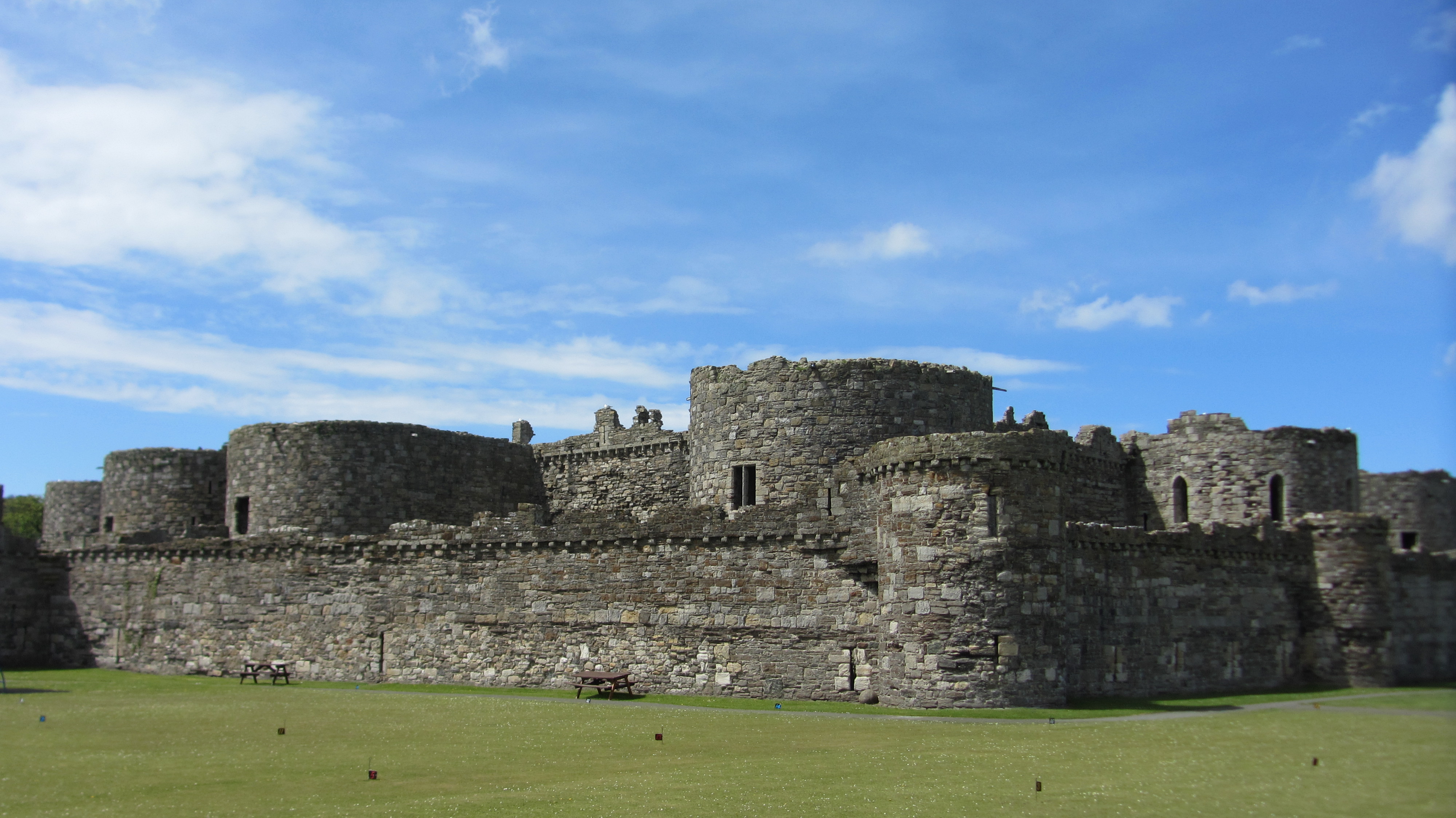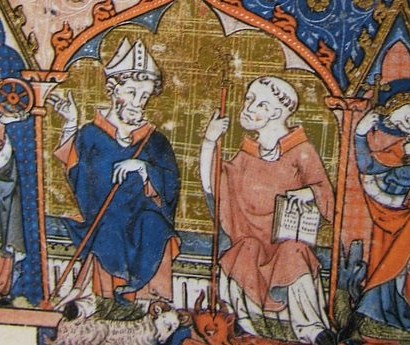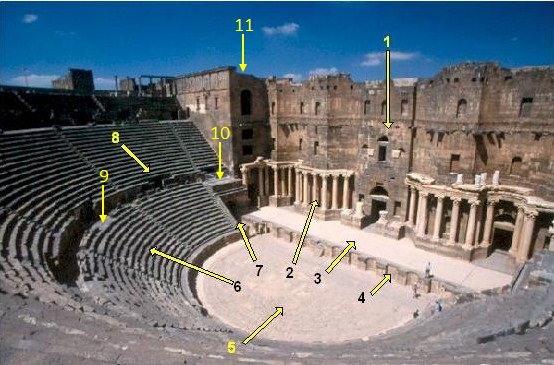|
Holyhead Town Hall
Holyhead Town Hall () is a municipal structure in Newry Street, Holyhead, Wales. The town hall is the meeting place of Holyhead Town Council. History The first municipal building in Holyhead was Holyhead Market Hall which, as well as being used as a venue for holding markets, also hosted the local law court hearings. In December 1873, a group of local businessmen formed a company to raise finance for a new public hall and to commission its construction: the site they selected in Newry Street was owned by William Williams of Jew Street in Holyhead. The new building was designed by the county surveyor for Caernarfonshire, John Thomas, in the Gothic Revival architecture, Gothic Revival style, built by a local contractor, Richard Williams, in buff brick and was officially opened on 31 August 1875. The opening was celebrated by two concerts, both conducted by Edward Stephen, Tanymarian, which included performances by the Welsh baritone singer, James Sauvage, in the presence of the l ... [...More Info...] [...Related Items...] OR: [Wikipedia] [Google] [Baidu] |
Holyhead
Holyhead (; , "Cybi's fort") is a historic port town, and is the list of Anglesey towns by population, largest town and a Community (Wales), community in the county of Isle of Anglesey, Wales. Holyhead is on Holy Island, Anglesey, Holy Island, bounded by the Irish Sea to the north, and is separated from Anglesey island by the narrow Cymyran Strait, having originally been connected to Anglesey via the Four Mile Bridge#The Bridge, Four Mile Bridge. In the mid-19th century, John Stanley, 1st Baron Stanley of Alderley, Lord Stanley, a local philanthropist, funded the building of a larger Stanley Embankment, causeway, known locally as "the Cobb". it now carries the A5 road (Great Britain), A5 and the North Wales Coast Line, railway line. The A55 road (Great Britain), A55 dual carriageway runs parallel to the Cobb on a modern causeway. The town houses the Port of Holyhead, a major Irish Sea port for connections towards Ireland. The population of the town proper as of the 2021 censu ... [...More Info...] [...Related Items...] OR: [Wikipedia] [Google] [Baidu] |
Buttress
A buttress is an architectural structure built against or projecting from a wall which serves to support or reinforce the wall. Buttresses are fairly common on more ancient (typically Gothic) buildings, as a means of providing support to act against the lateral (sideways) forces arising out of inadequately braced roof structures. The term ''counterfort'' can be synonymous with buttress and is often used when referring to dams, retaining walls and other structures holding back earth. Early examples of buttresses are found on the Eanna Temple (ancient Uruk), dating to as early as the 4th millennium BC. Terminology In addition to flying and ordinary buttresses, brick and masonry buttresses that support wall corners can be classified according to their ground plan. A clasping or clamped buttress has an L-shaped ground plan surrounding the corner, an angled buttress has two buttresses meeting at the corner, a setback buttress is similar to an angled buttress but the buttresses ... [...More Info...] [...Related Items...] OR: [Wikipedia] [Google] [Baidu] |
Government Buildings Completed In 1875
A government is the system or group of people governing an organized community, generally a state. In the case of its broad associative definition, government normally consists of legislature, executive, and judiciary. Government is a means by which organizational policies are enforced, as well as a mechanism for determining policy. In many countries, the government has a kind of constitution, a statement of its governing principles and philosophy. While all types of organizations have governance, the term ''government'' is often used more specifically to refer to the approximately 200 independent national governments and subsidiary organizations. The main types of modern political systems recognized are democracies, totalitarian regimes, and, sitting between these two, authoritarian regimes with a variety of hybrid regimes. Modern classification systems also include monarchies as a standalone entity or as a hybrid system of the main three. Historically prevalent forms ... [...More Info...] [...Related Items...] OR: [Wikipedia] [Google] [Baidu] |
World War I
World War I or the First World War (28 July 1914 – 11 November 1918), also known as the Great War, was a World war, global conflict between two coalitions: the Allies of World War I, Allies (or Entente) and the Central Powers. Fighting took place mainly in European theatre of World War I, Europe and the Middle Eastern theatre of World War I, Middle East, as well as in parts of African theatre of World War I, Africa and the Asian and Pacific theatre of World War I, Asia-Pacific, and in Europe was characterised by trench warfare; the widespread use of Artillery of World War I, artillery, machine guns, and Chemical weapons in World War I, chemical weapons (gas); and the introductions of Tanks in World War I, tanks and Aviation in World War I, aircraft. World War I was one of the List of wars by death toll, deadliest conflicts in history, resulting in an estimated World War I casualties, 10 million military dead and more than 20 million wounded, plus some 10 million civilian de ... [...More Info...] [...Related Items...] OR: [Wikipedia] [Google] [Baidu] |
Imperial German Navy
The Imperial German Navy or the ''Kaiserliche Marine'' (Imperial Navy) was the navy of the German Empire, which existed between 1871 and 1919. It grew out of the small Prussian Navy (from 1867 the North German Federal Navy), which was mainly for coast defence. Wilhelm II, Kaiser Wilhelm II greatly expanded the navy. The key leader was Admiral Alfred von Tirpitz, who greatly expanded the size and quality of the navy, while adopting the Command of the sea, sea power theories of American strategist Alfred Thayer Mahan. The result was a Anglo-German naval arms race, naval arms race with Britain, as the German navy grew to become one of the greatest maritime forces in the world, second only to the Royal Navy. The German surface navy proved ineffective during the First World War; its only major engagement, the Battle of Jutland, was a draw, but it kept the surface fleet largely in port for the rest of the war. The submarine fleet was greatly expanded and threatened the British supply s ... [...More Info...] [...Related Items...] OR: [Wikipedia] [Google] [Baidu] |
HMHS Anglia
SS ''Anglia'' was a steam ship requisitioned for use as a hospital ship during the First World War. On 17 November 1915 she hit a naval mine, mine laid by the German U-boat, SM UC-5, ''UC-5''. History ''Anglia'' was built by William Denny and Brothers, Wm Denny & Brothers of Dumbarton, Scotland for the London and North Western Railway and was delivered in 1900. At first she was used on the Holyhead to North Wall, Dublin, Dublin North Wall service, then from 1908 on the Holyhead to Kingstown (later named Dún Laoghaire) service. With the outbreak of war she was drafted as a hospital ship. Sinking On 17 November 1915 ''Anglia'' was returning from Calais to Dover, carrying 390 injured officers and soldiers. At around 12:30 pm, east of Folkestone Gate, HMHS ''Anglia'' struck a mine and sank in fifteen minutes. The nearby torpedo gunboat HMS Hazard (1894), HMS ''Hazard'' helped evacuate the passengers and crew. Despite the assistance of the nearby Collier (ship type), collier ... [...More Info...] [...Related Items...] OR: [Wikipedia] [Google] [Baidu] |
TSS Hibernia (1899)
TSS ''Hibernia'' was a twin screw steamer passenger vessel operated by the London and North Western Railway from 1900 to 1914. She was renamed HMS ''Tara'' on requisition by the Admiralty in 1914, and sunk in action in November 1915. History She was built by William Denny and Brothers of Dumbarton for the London and North Western Railway in 1899 and introduced into service in early 1900. She arrived at Dublin in January 1900, and served in the waters between Dublin and Holyhead. In 1914 she was requisitioned by the British Admiralty as an armed boarding steamer and renamed HMS ''Tara''. She was torpedoed by in Sollum Bay on the Egyptian coast on 5 November 1915. The U-boat saved ''Hibernia''s crew and handed them over to Senussi tribesmen as prisoners of war (POWs). On 14 March 1916 they were being held at Bir Hakeim along with the crew of HMT ''Moorina'', a horse transport. They were rescued by the Duke of Westminster's armoured car brigade, part of the Western Frontie ... [...More Info...] [...Related Items...] OR: [Wikipedia] [Google] [Baidu] |
Llangefni
; ) is the county town of Anglesey in Wales. At the 2011 census, Llangefni's population was 5,116, making it the second-largest town in the county and the largest on the island. The community includes the village of Rhosmeirch. Location The town is near the centre of Anglesey, and is on the River Cefni, after which it is named. Its attractions include the Oriel Ynys Môn museum, which details the history of Anglesey and houses collections of the painters Kyffin Williams and Charles Tunnicliffe. In the west of the town is a large secondary school, Ysgol Gyfun Llangefni (Llangefni Comprehensive School), and in the north a Victorian parish church, St Cyngar's, set in a wooded riverside location called the Dingle. The town was formerly named Llangyngar, Welsh for "St Cyngar's church". Commerce, transport and education Llangefni is a commercial and farming town in Anglesey and once hosted the largest cattle market on the island. There is a relatively large industrial esta ... [...More Info...] [...Related Items...] OR: [Wikipedia] [Google] [Baidu] |
Anglesey
Anglesey ( ; ) is an island off the north-west coast of Wales. It forms the bulk of the Principal areas of Wales, county known as the Isle of Anglesey, which also includes Holy Island, Anglesey, Holy Island () and some islets and Skerry, skerries. The county borders Gwynedd across the Menai Strait to the southeast, and is otherwise surrounded by the Irish Sea. Holyhead is the largest town, and the administrative centre is Llangefni. The county is part of the Preserved counties of Wales, preserved county of Gwynedd. Anglesey is the northernmost county in Wales. The Isle of Anglesey has an area of and a population of in . After Holyhead (12,103), the largest settlements are Llangefni (5,500) and Amlwch (3,967). The economy of the county is mostly based on agriculture, energy, and tourism, the latter especially on the coast. Holyhead is also a major ferry port for Dublin, Ireland. The county has the second-highest percentage of Welsh language, Welsh speakers in Wales, at 57.2%, ... [...More Info...] [...Related Items...] OR: [Wikipedia] [Google] [Baidu] |
Urban District (Great Britain And Ireland)
In England and Wales, an urban district was a type of local government district that covered an urbanised area. Urban districts had an elected urban district council (UDC), which shared local government responsibilities with a county council. In England and Wales, urban districts and rural districts were created in 1894 by the Local Government Act 1894 ( 56 & 57 Vict. c. 73) as subdivisions of administrative counties. A similar model of urban and rural districts was also established in Ireland in 1899, which continued separately in Northern Ireland and the Republic of Ireland after 1921. They replaced the earlier system of urban and rural sanitary districts (based on poor law unions) whose functions were taken over by the district councils. The district councils also had wider powers over local matters such as parks, cemeteries and local planning. An urban district usually contained a single parish, while a rural district might contain many. Urban districts were considere ... [...More Info...] [...Related Items...] OR: [Wikipedia] [Google] [Baidu] |
Worcester, England
Worcester ( ) is a cathedral city in Worcestershire, England, of which it is the county town. It is south-west of Birmingham, north of Gloucester and north-east of Hereford. The population was 103,872 in the 2021 census. The River Severn flanks the western side of the city centre, overlooked by Worcester Cathedral. Worcester is the home of Royal Worcester, Royal Worcester Porcelain, Lea & Perrins (makers of traditional Worcestershire sauce), the University of Worcester, and ''Berrow's Worcester Journal'', claimed as the world's oldest newspaper. The composer Edward Elgar (1857–1934) grew up in the city. The Battle of Worcester in 1651 was the final battle of the English Civil War, during which Oliver Cromwell's New Model Army defeated Charles II of England, King Charles II's Cavalier, Royalists. History Early history The trade route past Worcester, later part of the Roman roads in Britain, Roman Ryknild Street, dates from Neolithic times. It commanded a ford crossing o ... [...More Info...] [...Related Items...] OR: [Wikipedia] [Google] [Baidu] |
Proscenium
A proscenium (, ) is the virtual vertical plane of space in a theatre, usually surrounded on the top and sides by a physical proscenium arch (whether or not truly "arched") and on the bottom by the stage floor itself, which serves as the frame into which the audience observes from a more or less unified angle the events taking place upon the stage (theatre), stage during a theatrical performance. The concept of the fourth wall of the theatre stage space that faces the audience is essentially the same. It can be considered as a Social constructionism, social construct which divides the actors and their stage-world from the audience which has come to witness it. But since the curtain usually comes down just behind the proscenium arch, it has a physical reality when the curtain is down, hiding the stage from view. The same plane also includes the drop, in traditional theatres of modern times, from the stage level to the "stalls" level of the audience, which was the original meani ... [...More Info...] [...Related Items...] OR: [Wikipedia] [Google] [Baidu] |





